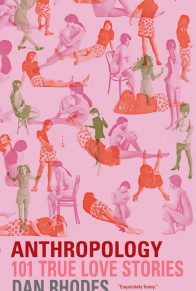Early in 1923, in his sixty-seventh year, Sigmund Freud, originator of the theory and practice of psychoanalysis, and the radical and provocative Oedipus complex, discovered a growth in his mouth. He consulted Marcus Hajek, a rhinologist acquaintance in Vienna, who indicated that the growth was almost certainly the result of years of heavy smoking. Freud was abstemious with alcohol, mistrusting anything likely to cloud his wits, but he found nicotine a powerful stimulus to thought and it had become one of his chief sources of daily pleasure. Perhaps aware of the implications for his most treasured habit, or perhaps because, since a suspected coronary thrombosis at the age of thirty, Freud was perpetually on the lookout for signs of his impending death, he did nothing for several weeks after Hajek’s diagnosis. Then, one morning, without informing either friends or family, he turned up unannounced at the outpatient clinic of the hospital where Hajek worked and asked that the growth be removed.
Later in the morning his wife, Martha, and their youngest daughter, Anna, were alarmed to receive a call from the clinic requesting that they bring over Freud’s night things. They were even more unnerved when they arrived to find Freud sitting unattended in a chair in the outpatients’ department, his usually immaculate shirt and jacket stained with blood. The loss of blood from the operation, conducted under local anaesthetic, had been so profuse that it was thought prudent Freud stay overnight at the clinic. As there were no private rooms and there was a shortage of overnight beds, a temporary ward was contrived by rigging up a curtain across a small room already occupied by another patient, a dwarf receiving treatment for cretinism.
That afternoon, the wound from the operation began to haemorrhage. Freud was unable to attract anyone’s attention as the bell by his bed was defunct and the operation had left him in no condition to shout. In the end it was the cretinous dwarf who hurried for help and very possibly saved his room-mate’s life. Freud’s daughter Anna, who thereafter faithfully provided her father with any necessary nursing, remained with him through the following night, during which, she reported, her father was semi-conscious from loss of blood and sedative medication.
When examined, the growth proved to be cancerous. This news, however, was kept from the patient by Hajek and by another doctor friend and future psychoanalyst, Felix Deutsch, whom Freud had also consulted. An intensive and enervating radium therapy was begun which left him in debilitating pain for many weeks.
At this same time his favourite grandchild, Heinz—whom Freud regarded as exceptional and with whom he had formed a close bond—had his tonsils removed. In the aftermath of their related operations, four-year-old Heinz and his grandfather compared notes about their progress. But the boy was delicate and four months later he died of TB. Freud loved Heinz very deeply and the news of his untimely death was the only occasion on which he was known to have shed tears. It precipitated his first bout of real depression. He proclaimed, “Everything has lost its meaning for me” and the loss of Heinz—which was to be compounded by the later loss of Heinz’s mother, his beloved daughter Sophie—affected him more seriously than his own mortal illness. After this, Freud declared, he could never become emotionally attached to any new person again; and about this time he turned to dogs, especially the three chows he came to own, as objects of fresh affection.
Shortly after this series of traumas and discouragements, Freud took his daughter Anna on a visit to Rome, and during the journey his mouth haemorrhaged again. Deutsch had already consulted Professor Hans Pichler, a highly regarded oral surgeon, over Freud’s case. Pichler, when he examined Freud on his return, decided that further and more radical surgery to the palate and jaw was called for. The true state of Freud’s health was still kept from him, perhaps because of his notorious preoccupation with his own death; when eventually this precautionary censoring was revealed to him, predictably, Freud was furious. For this reason, in 1929 he engaged Dr Max Schur to be his personal physician on the absolute understanding that no medical detail, however unpropitious and dismaying, was to be kept from him and that Schur would help Freud to “die decently” should he come to find the effects of the cancer more than he was equal to.
The second operation was a major undertaking. It was conducted in two stages during which Pichler slit open Freud’s cheek from mouth to right ear and removed the best part of the upper palate and a large section of the jawbone. Here began sixteen years of treatments and operations, thirty-three all told, attempting to contain the cancer. This was not helped by Freud’s unwillingness to forgo his customary indulgence in cigars. Apart from a brief period of abstinence which he found almost unendurable—the more so as he was convinced that a deficiency of nicotine impaired his ability to think—for most of the rest of his life he continued to smoke twenty cigars a day.
The treatment for the cancer proved as invasive and undermining as the illness. With a major part of the palate missing, the nasal cavity was open to the mouth, so an oral prosthesis which Freud nicknamed “the monster” was devised to enable him to speak—a necessary function of his clinical work—and to eat, which from this time onwards he preferred to do alone. The ill-fitting prosthesis, which had to be modified repeatedly, caused constant irritation and persistent ulceration to the soft tissues of the mouth. Visitors had to acclimatise themselves to Freud’s habit of holding the device in with his thumb while he spoke, if “the monster” had been reduced too far in size. As a result of the botched initial operation, Freud’s ability to open his mouth was compromised (he was only able to smoke his cigars by forcing open his teeth with a clothes peg); if the prosthesis was too tight and was removed, for even a few hours, to give its wearer some relief from its insufferable pressure, the surrounding tissues in the mouth shrank, making it appallingly hard to reinsert. On more than one occasion, medical help had to be summoned to get “the monster” back in or out again.
In 1933 the Nazis embarked on their anti-Semitic demonstrations and Freud’s books, branded “pornography,” were publicly burned. On 12 March 1938 Hitler invaded a compliant Austria and Freud wrote in his diary: Finis Austriae. Although many of his colleagues had left years earlier, Freud, refusing to accept that not merely his books but his life itself was in danger, remained in Vienna. On 13 March the Vienna Psychoanalytic Society voted to dissolve and recommended that its members leave the country immediately. Freud’s home was raided twice and on the second occasion his daughter Anna was arrested and taken for questioning by the Gestapo. Various well-connected friends and contacts weighed in on Freud’s behalf and the Nazis, after months of prevarication, finally consented to the departure of Freud and his immediate family on condition he signed a document attesting to their good treatment of him. (Permission for his four sisters to leave was denied and all died in concentration camps.) According to his biographer Ernest Jones, Freud, with characteristic mordant irony, wanted to append a sentence to the unctuous official document: “I can recommend the Gestapo heartily to anyone.”
The Freud family reached England via Paris on 6 July 1938. Towards the end of August another carcinoma appeared in Freud’s mouth and early in September Pichler travelled to England to perform further extensive oral surgery. Freud was given morphine as a matter of course during his hospital stays and welcomed the palliative effects. But once home he refused any painkiller stronger than aspirin. “I prefer to think in torment than not to be able to think clearly,” he wrote.
While Freud was in hospital his wife and his sister-in-law, Minna, moved into 20 Maresfield Gardens, a comfortable redbrick house close to Hampstead Heath. He joined them after his discharge, along with the constant Anna (referred to by Freud as his “Antigone”) who, as ever, had remained with her father throughout his hospital stay. The furniture and effects of Freud’s Viennese study had been faithfully reassembled in the long light room that looked on to a loggia and a pleasantly sequestered garden. His prized collection of ancient artefacts, mercifully rescued from the Nazis’ depredations, had been transported to England. To one piece in particular, a small statue of Athena, the Ancient Greek goddess of wisdom, Freud attached great significance. Before the safety of the rest of the collection was assured he singled this out among all his treasures to be sent on in advance of his own departure. When the family finally reached England Freud wrote, “We arrived rich and proud under the protection of Athena.”
The little bronze figure of Athena without her spear had pride of place on Freud’s desk, with other precious relics of past civilisations. Here, sitting in the distinctive tripod-like chair—specially designed to accommodate its occupant’s habit of reading with one leg slung over the arm—alongside the Persian-rug-draped couch, the green velvet tub armchair where he sat to analyse, and his extensive and arcane library, Freud continued to work: to think, to write, to talk to colleagues and his many distinguished visitors, and to analyse a few patients, though by this time his ability to speak was severely impeded by “the monster” and talking at any length was painful and tiring. In addition, as a result of the many operations and subsequent infections, he was all but deaf in his right ear. To make matters worse, the novocaine injections, which had formerly acted to relieve the severer bouts of pain, had begun to lose their efficacy and to cause side effects.
Some time during February 1939 another growth appeared. This time it was inoperable. Over the course of the next months, as Freud grew increasingly weak from the aggressive radium treatments, the tumour increased in malignancy and size. By August, the cancer had eaten through his cheek and he was in unabated pain. Into the bargain, the stench from the sepsis in the wound had become overwhelming. When his much-loved chow, Lün, whom he had insisted be brought from Vienna in the family’s flight from the Nazis, shrank from the smell and refused any longer to be petted by her master, it was a dereliction which Freud found unbearable.
On the morning of 21 September, less than three weeks after the Allies had declared war on Germany, Freud sent for Max Schur who, save for a short visit to the USA, had continued to oversee Freud’s care. Taking his friend and physician’s hand he said, “My dear Schur, you certainly remember our first talk. You promised me then not to forsake me when my time comes. Now it is nothing but torture and makes no sense any more.” He added, “Tell Anna about our talk.” Early the next morning Schur administered two centigrams of morphine and his patient lapsed into sleep. After twelve hours the dose was repeated. Sigmund Freud died just before midnight on 23 September 1939. His body was cremated three days later. The ashes were interred in one of his favourite Greek urns.













